The Scotch GambitAn Energetic and Aggressive
System for WhiteAlex Fishbein The Scotch Gambit by Alex Fishbein ISBN: 978-1-941270-74-5 (print) ISBN: 978-1-941270-75-2 (eBook) Copyright 2017 Alex Fishbein All Rights Reserved No part of this book may be used, reproduced, stored in a retrieval system or transmitted in any manner or form whatsoever or by any means, electronic, electrostatic, magnetic tape, photocopying, recording or otherwise, without the express written permission from the publisher except in the case of brief quotations embodied in critical articles or reviews. Published by: Russell Enterprises, Inc. P.O. Box 3131 Milford, CT 06460 USA http://www.russell-enterprises.com Cover by Janel Lowrance Printed in the United States of America
The Scotch Gambit by Alex Fishbein ISBN: 978-1-941270-74-5 (print) ISBN: 978-1-941270-75-2 (eBook) Copyright 2017 Alex Fishbein All Rights Reserved No part of this book may be used, reproduced, stored in a retrieval system or transmitted in any manner or form whatsoever or by any means, electronic, electrostatic, magnetic tape, photocopying, recording or otherwise, without the express written permission from the publisher except in the case of brief quotations embodied in critical articles or reviews. Published by: Russell Enterprises, Inc. P.O. Box 3131 Milford, CT 06460 USA http://www.russell-enterprises.com Cover by Janel Lowrance Printed in the United States of America  Table of ContentsIntroductionWhat is the Scotch Gambit? The moves 1.e4 e5 2.Nf3 Nc6 3.d4 exd4 4.Bc4 define the Scotch Gambit.
Table of ContentsIntroductionWhat is the Scotch Gambit? The moves 1.e4 e5 2.Nf3 Nc6 3.d4 exd4 4.Bc4 define the Scotch Gambit. 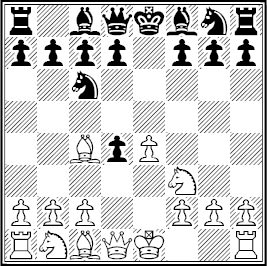 The difference between the Scotch Gambit and the Scotch Game (4.Nxd4) is that White delays recapturing the pawn on d4. With 4.Bc4, White develops quickly and attacks the f7-square, Blacks weakest point in the opening.
The difference between the Scotch Gambit and the Scotch Game (4.Nxd4) is that White delays recapturing the pawn on d4. With 4.Bc4, White develops quickly and attacks the f7-square, Blacks weakest point in the opening.
Blacks reaction to Whites immediate assault in the center will determine the pawn structure, and then White will typically (although not always) regain the pawn. The most common response to Whites fourth move is 4Nf6, transposing to the Two Knights Defense (1.e4 e5 2.Nf3 Nc6 3.Bc4 Nf6 4.d4 exd4). Here, 5.e5 initiates the Modern Attack, which forms the main part of this book. The other response is 4Bc5, after which White either transposes to the Giuoco Piano with 5.c3 or continues in gambit style with 5.0-0. The second half of the book illustrates that the gambit line 5.0-0 is much better for White than its reputation and also offers a modern and positional approach for White after 5.c3. While technically the Scotch Gambit usually transposes to the Two Knights Defense or the Giuoco Piano, the Scotch Gambit move order commits both sides to concrete and sharp play, and the resulting positions form a stark contrast to the slow maneuvering characterized by the d2-d3 lines.
This brings us to the main benefits of the Scotch Gambit for White. Why you should play the Scotch Gambit To improve in chess, it is important to play openings that develop a sense of initiative, an ability to calculate variations, and a good feeling for king safety. I know many players who did not reach their full potential because they did not play attacking systems. Some variations in the English Opening, for instance, develop your strategical sense at the expense of tactics. Today, many lines even after 1.e4 e5 are also very slow and positional. White often plays d2-d3 even in the Ruy Lopez, and confrontation is delayed until much later.
I think those openings are more appropriate for grandmasters, as they already have the tactical skills. Early in your chess development, however, you need the tactics. The Modern Attack of the Two Knights and the other lines we analyze in this book are conducive for developing your feeling for the initiative. With an early d2-d4, an immediate fight for the center ensues. We will encounter situations already in the opening where one or both kings come under attack. You will train your ability to see through complications.
At the same time, however, the opening variations in this book have no shortage of positional themes. You will see weaknesses of squares, pawn structure subtleties, and good and bad bishops. How this book is structured You will find ten chapters, each covering a significant branch of the opening. In the first chapter, we immediately delve into the main line of the Modern Attack. The next several chapters examine other lines that start with the Scotch Gambit and transpose into the Two Knights Defense. After that, we look at two ways to continue if Black plays 4Bc5. Finally, we mention systems where Black does not play 2Nc6.
Most chapters begin with a theoretical section. Here, you will find the move sequences that I consider the best for both sides, or most principled, in that branch. The theoretical section is therefore designed to be a step ahead of published theory or games in that particular variation. You will find my own suggested plans there, or subtle improvements or corrections. The theoretical section can serve as the basis for your own further research. After the theoretical section comes the illustrative games section.
Each chapter will have a few representative games. We pay special attention to the opening, the transition from the opening to the middlegame, and typical middlegame plans. I almost always show the entire game; if the middlegame or ending is not relevant to our theme, then I may show it with few or no comments. I have tried to select mostly games of high quality and played by strong players. What is special about this book I am addressing this book to a wide audience: from intermediate players to professionals. There will be analysis of variations and descriptions of strategy.
My bar for all of my recommendations is very high: I must be willing to play them myself. I am an active practical player, a lifelong 1.e4 player as White, and I have often played 1e5 as Black. You will see a few of my own games here. If a line does not work for me, I cannot recommend it to others. Therefore, this book offers a glimpse into a creative laboratory. It was as much a learning experience for me as I hope it will be for you.
Each chapter is in the form of a recipe that I would make for myself. I have tried to avoid a common pitfall in repertoire books: illustrating your recommendation with a beautiful game, while leaving the best response by your opponent as an aside. In this book, Blacks most important replies in the most topical variations are clearly visible (usually in the theoretical section). This book is a presentation, on paper, of the theory file in my database, where I take special care not to miss the best move by a future opponent. In this way, I have tried to achieve the highest degree of intellectual honesty. In addition, a quarter of the selected games illustrate what not to do as White, and how Black can win with purposeful play if White makes mistakes.
For these reasons, this book should also be useful to people playing 1.e4 e5 with Black. In fact, because I emphasize strategical themes over memorization, I hope this book can improve your chess even if you never play this opening for either color. This book is also unusual in that it updates an opening that has been left in the shadows. Because of fashion trends, the Modern Attack of the Two Knights Defense has never been very popular. It has never been played at the world championship level. Only a handful of grandmasters play it regularly for White.
The limited practice makes for a rich harvest for independent study. Many interesting lines discussed here have rarely been played in serious tournaments. Some of them enjoyed their peak in popularity in the 19th century. I have updated their evaluation, and you now have the state of the art of an important branch of theory. The Modern Attack has been featured in several recent repertoire books as a chapter but has not been subjected to thorough analysis until now. Still, much of my work would be almost impossible without referring to these excellent books.
Glenn Flear wrote a wonderful book on open games in 2010, and it formed a starting point for my theoretical research. In the last couple of years, some branches were analyzed further, and I have used four recent sources:
Next page
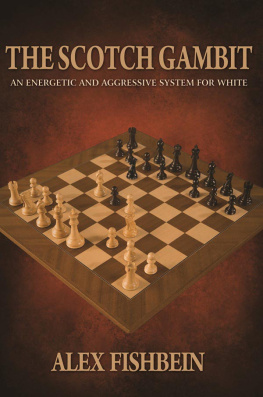

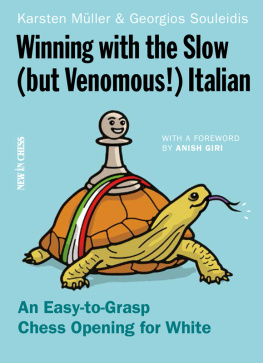

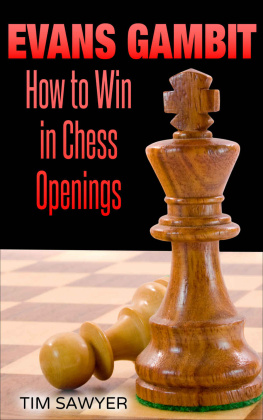
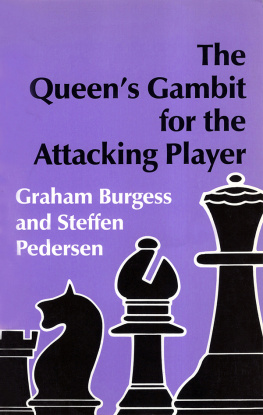
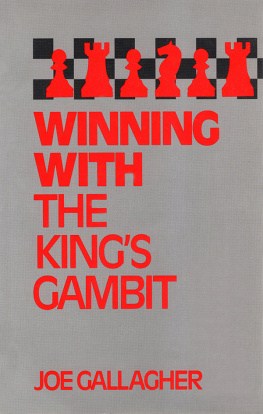

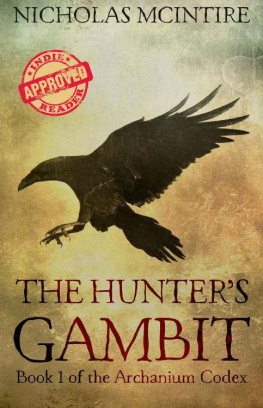

![Ronald R Koegler - Benitos gambit : [a novel]](/uploads/posts/book/63600/thumbs/ronald-r-koegler-benito-s-gambit-a-novel.jpg)
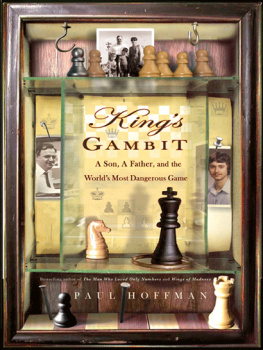
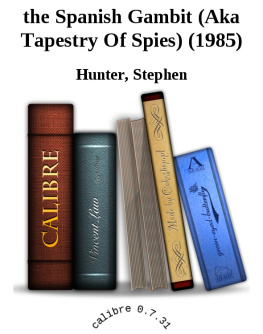
 The Scotch Gambit by Alex Fishbein ISBN: 978-1-941270-74-5 (print) ISBN: 978-1-941270-75-2 (eBook) Copyright 2017 Alex Fishbein All Rights Reserved No part of this book may be used, reproduced, stored in a retrieval system or transmitted in any manner or form whatsoever or by any means, electronic, electrostatic, magnetic tape, photocopying, recording or otherwise, without the express written permission from the publisher except in the case of brief quotations embodied in critical articles or reviews. Published by: Russell Enterprises, Inc. P.O. Box 3131 Milford, CT 06460 USA http://www.russell-enterprises.com Cover by Janel Lowrance Printed in the United States of America
The Scotch Gambit by Alex Fishbein ISBN: 978-1-941270-74-5 (print) ISBN: 978-1-941270-75-2 (eBook) Copyright 2017 Alex Fishbein All Rights Reserved No part of this book may be used, reproduced, stored in a retrieval system or transmitted in any manner or form whatsoever or by any means, electronic, electrostatic, magnetic tape, photocopying, recording or otherwise, without the express written permission from the publisher except in the case of brief quotations embodied in critical articles or reviews. Published by: Russell Enterprises, Inc. P.O. Box 3131 Milford, CT 06460 USA http://www.russell-enterprises.com Cover by Janel Lowrance Printed in the United States of America  Table of ContentsIntroductionWhat is the Scotch Gambit? The moves 1.e4 e5 2.Nf3 Nc6 3.d4 exd4 4.Bc4 define the Scotch Gambit.
Table of ContentsIntroductionWhat is the Scotch Gambit? The moves 1.e4 e5 2.Nf3 Nc6 3.d4 exd4 4.Bc4 define the Scotch Gambit.  The difference between the Scotch Gambit and the Scotch Game (4.Nxd4) is that White delays recapturing the pawn on d4. With 4.Bc4, White develops quickly and attacks the f7-square, Blacks weakest point in the opening.
The difference between the Scotch Gambit and the Scotch Game (4.Nxd4) is that White delays recapturing the pawn on d4. With 4.Bc4, White develops quickly and attacks the f7-square, Blacks weakest point in the opening.